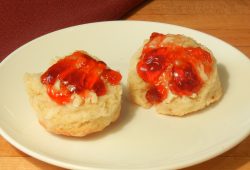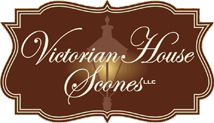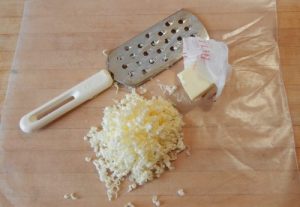 Muffins, scones and biscuits all fall into the category of ‘quick breads’. However, don’t be confused, they are NOT breads, and they use completely different skills and techniques.
Muffins, scones and biscuits all fall into the category of ‘quick breads’. However, don’t be confused, they are NOT breads, and they use completely different skills and techniques.
If I had to distill my advice on quick breads down to one or two comments only, it would be this:
1. For scones and biscuits–cut in frozen butter. Then add the buttermilk quickly, while handling (mixing) the dough as little as possible.
2. For muffins–first, blend or cream the butter, sugar and eggs thoroughly. Then, when adding the flour and dry ingredients–do this as gently and minimally as possible.
WHY? Here is what ultimately separates bread baking from quick bread baking. When you make bread, the more you knead the dough the better it becomes. But with quick breads the more you ‘work’ the dough or batter, the tougher and more rubber-y it becomes. The reason is the same for all, and the culprit is gluten. Bread thrives on well-developed gluten to give it its structure and characteristic ‘chew’. Gluten develops as you knead the dough. When you make quick breads, you do NOT want gluten to form. Thus, you handle or ‘work’ the dough or batter as little as possible.
How does this translate into practice? It means that when you make quick breads, you work the liquid and dry ingredients together by hand, with a spatula. Run your spatula around the bowl and along the bottom, scooping from the bottom and bringing it up to the top to be sure that the dry ingredients get combined into the liquid. Continue doing this until the dough/batter JUST begins to come together–and quit!
Fill the muffin tins–or turn the scone/biscuit dough out onto a floured board and cut your scones. Done!

 Cart
Cart